
My Five-Year Journey to Landing a Job at Figma
Jan 19, 2024
Since joining Figma in 2022 as a Designer Advocate, every so often, I get asked about how I ended up at Figma. It's actually an interesting story when I think about everything that led up to it. Full disclaimer: I didn't actually spend five years trying to get a job at Figma. This story is about what I did over those five years that put me on the path to getting hired. Even if I had been intentional about it, a lot of things involved a bit of luck and serendipity years in the making. So, it's probably not useful for anyone to try and replicate, but for what it's worth, this is the story of how I got a job at Figma.
2016~2017: Discovering Figma
Before joining Figma I had been using the product a pretty long time, like 2016~ beta long time. In 2017 I was working as a product designer at a startup in Tokyo and spending a lot of time constantly evaluating new design tools and workflows when I stumbled across Figma.
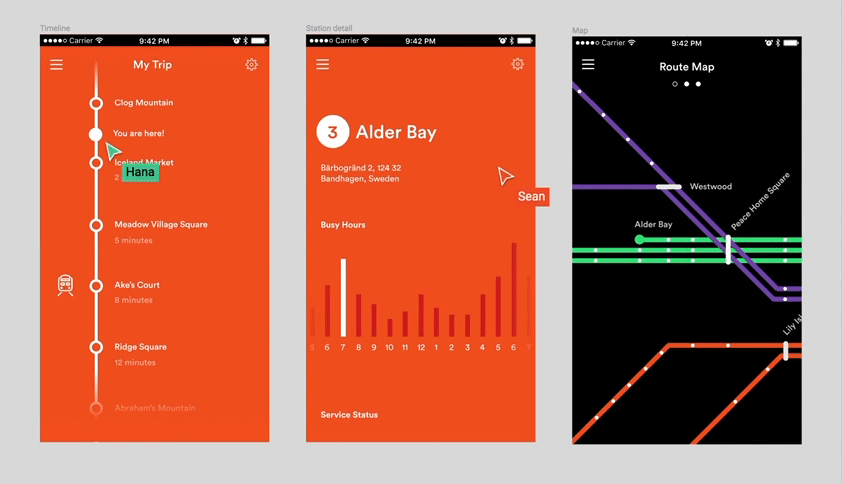
At first glance, it felt like an interesting tool with potential, but when I tried to create some designs with it using Japanese... it kinda sucked. 🫤 At the time, there were some issues with Japanese IME input, but the deal-breaker was that Japanese fonts didn't seem to work at all. When I tried typing Japanese characters into a text layer, it would just show blank spaces. After investigating things a bit more, I realized the problem: Japanese characters would only display when a Japanese font was selected. So, if a font that didn't support Japanese characters was selected, Figma didn't have a "fallback" font to use to show those unsupported characters. After figuring that out, I reported that issue along with a few others. A few weeks pass by, and one day I notice that most of the issues have been fixed. Yo, this dev team is kinda nice! 👌🏾
Even though it was still rough around the edges it didn't take much time to realize the real value of Figma was it's collaborative features.
For anyone who's spent an extended amount of time in Figma, you know that to get the most out of Figma, you need to get everyone using it. So, as soon as it came out of beta, I got my team together and pitched them on Figma. My pitch to the team about the benefits of the tool and how it would improve workflows was a success, and just like that, we switched.
Advocating for Figma circa 2017.💪
2018: Contributing to the design community
Fast forward a year later (2018), I quit the startup I was working at and decided to make a career shift to freelance design consulting. Transitioning to freelance meant I was working with many organizations, introducing them to new workflows and tools, including Figma.
In my previous role, successfully convincing my team to switch to Figma got me thinking a lot about optimizing the design process and tooling for more effective design. This curiosity is what led me to eventually discovering DesignOps. While diving headfirst into learning about DesignOps, I started to create design content to share my insights with the local design community. With both DesignOps and Figma being relatively unheard of at the time in Japan, I decided to put together a community event to talk about DesignOps in the context of Figma.
The problem was I had never held a community event before, so even though I had confidence in the topics I wasn't sure if I could actually get people to come to the event. So I reached out to Figma, told them about the event I was planning in Japan and asked for their support. To my surprise Claire and Tom from the Figma community team (which I would later join) responded and followed through on all my requests helping make the event a success. Figma's community team is kinda nice!🤘🏾
 A slide explaining the key features of Figma
A slide explaining the key features of Figma
At this point I'm becoming an even bigger fan of Figma, while also getting better at speaking to people about it.
2019: Meeting the Figma team in Tokyo
Now it's 2019 and Figma is not quite ubiquitous in Japan yet, but it seems to be gaining significant popularity in the design community.
Still jamming on learning more about DesignOps, I decide on a whim to create a series of articles about DesignOps by making a trip to the bay area interviewing leaders there in person.
After slipping into the DMs of a bunch of design leaders and managing to line up some great interviews, I figured that if I was gonna go all the way there I might as well try and get some time to talk to the team at Figma. After a few emails I managed to set up a time to meet at their office too! Looking back I was pretty surprised that everyone took the time to let me speak with them and thankful for that.
So just like that, I headed to San Francisco to meet with the Figma team. Unfortunately I wasn't able to meet Claire or Tom in person at the time (I hadn't realized that Tom lived in Canada yet), but I did manage to meet with the legendary Sho and Joey and wrote an interview article about Figma in Japanese. Not to brag, but yeah, I probably did the first ever Japanese Figma event and Figma interview. Trailblazing...😆
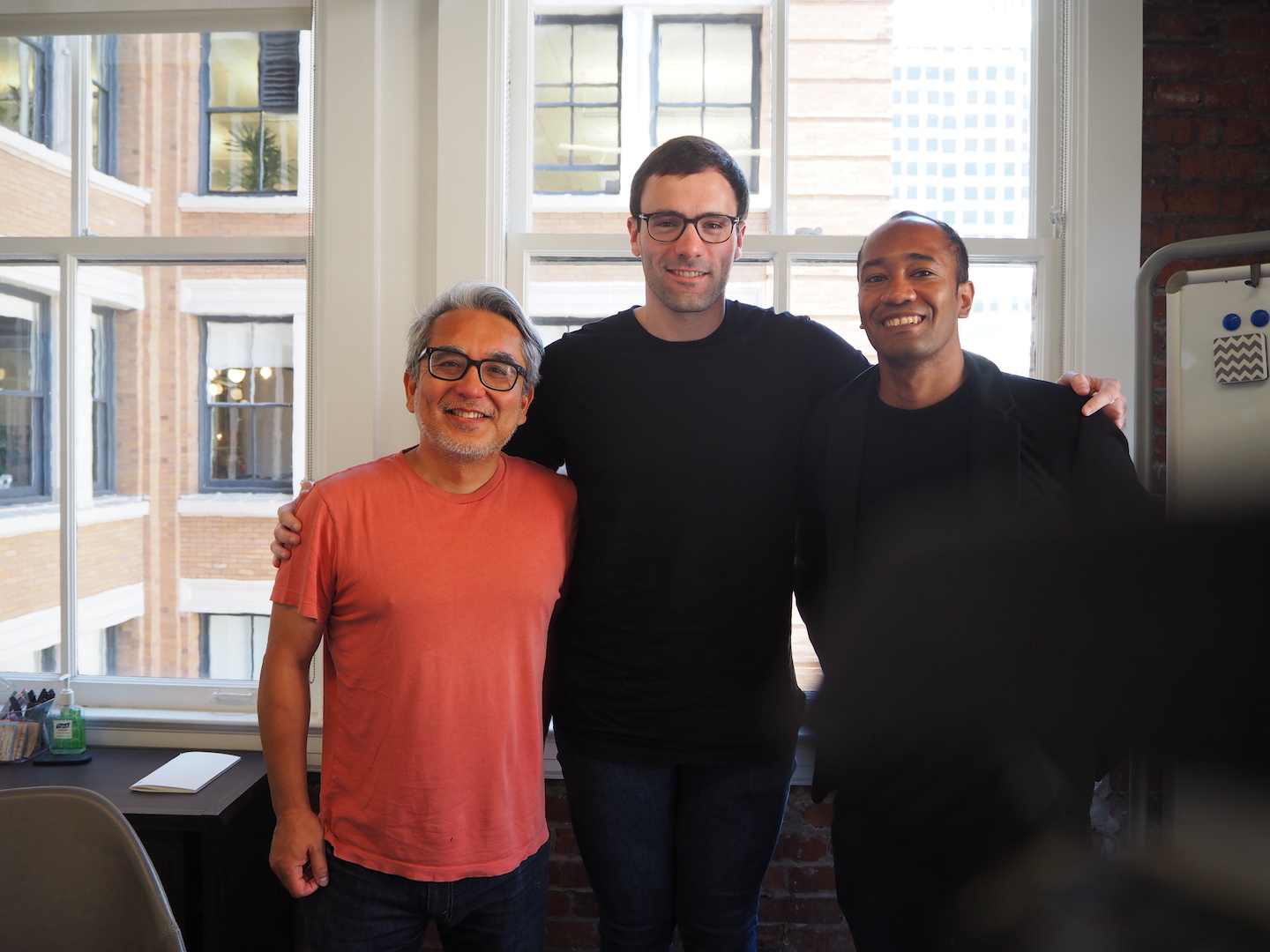 Meeting Sho and Joey at the Figma office
Meeting Sho and Joey at the Figma office
A few months pass after my trip, and I receive an email from Tom. He mentions that his team is planning a trip to Tokyo to meet with customers and thought it would be cool to put on a community event while they're in Japan. He's wondering if I can help them make the event happen. Being thankful for all the support up until that point, I was happy to assist them. We ended up holding the event at the same location I had used a few months earlier, this time with an even better turnout and engagement, thanks to the sessions from Sho, Yuhki, Tom, and the rest of the team.
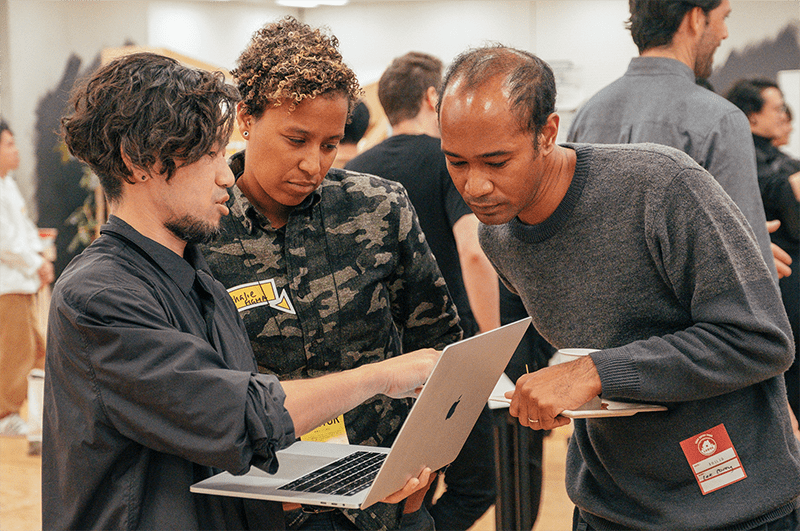
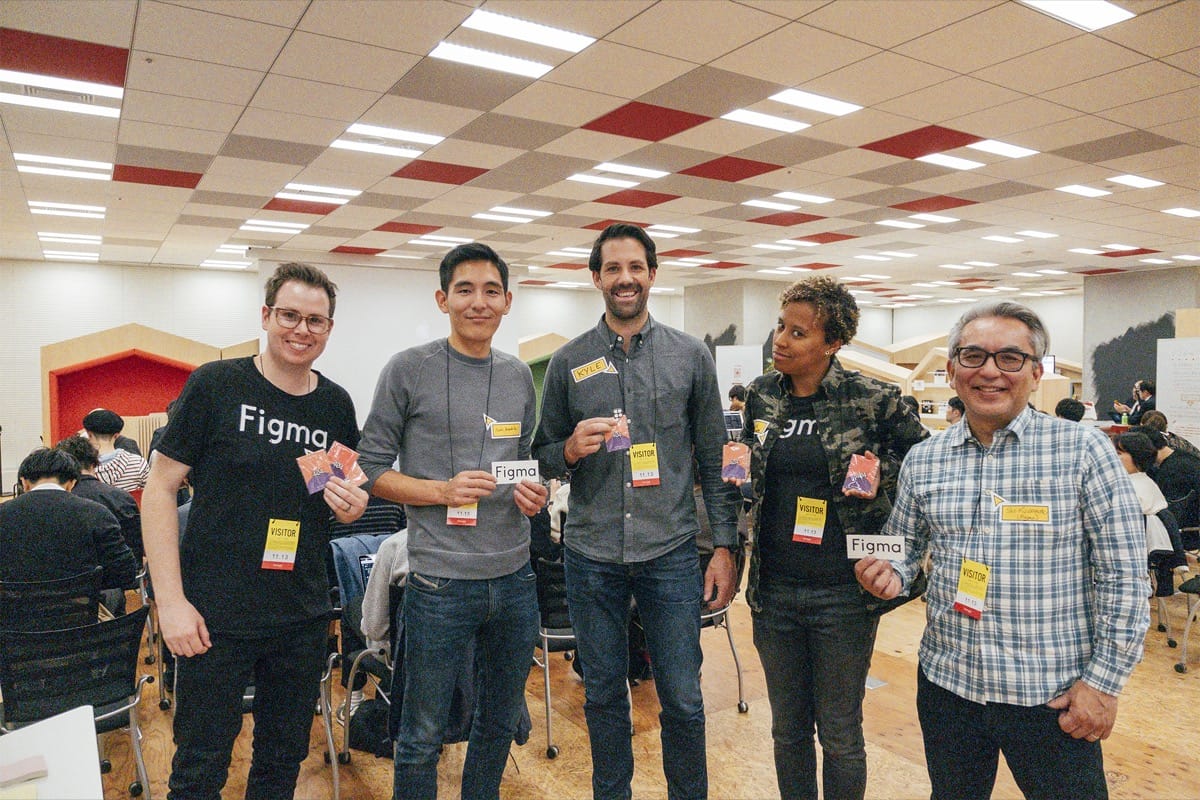 Tom, Yuhki, Kyle, Nat, and Sho at the second Figma event in 2019
Tom, Yuhki, Kyle, Nat, and Sho at the second Figma event in 2019
A day after the event, the team asked me if I'd like to join them for lunch somewhere. So we have a group of people who came all the way to Japan, some probably for the first time, likely eager to eat some great Japanese food... and what do I do? I take them to a Mexican restaurant.🌮 In hindsight, that was probably not the best move (years later, Sho still calls me out on this), but hey, it did have a nice rooftop terrace. 🤷🏽
Over lunch we talked about Figma and the Japanese design industry, among other things. During our conversation, I mentioned that localizing the product into Japanese and hiring a local team in Japan would probably help their growth a lot, and if they ever needed help with that let me know (😉). I thought it was a long shot, unlikely to happen anytime soon, but it was worth trying!
After a few days, the team wrapped up their short tour of Tokyo, and headed back to San Francisco. I'm left thinking about Figma: It's a pretty good product, and the people are pretty nice too.
I wouldn't mind working in a team like this... Too bad there aren't any opportunities in Tokyo...🤔
2020: Config 2020
So in 2020 Figma launched a little thing called Config.
Config in 2020 was a single day conference where about 1200 designers, and product people from all around the world came to talk about Figma.
With Figma's focus on community at the time it made perfect sense. I didn't know what to expect but it sounded cool so I was in.
You couldn't actually just buy a ticket though. You needed to apply and be chosen first. So I applied for a ticket and to my surprise...I got in!
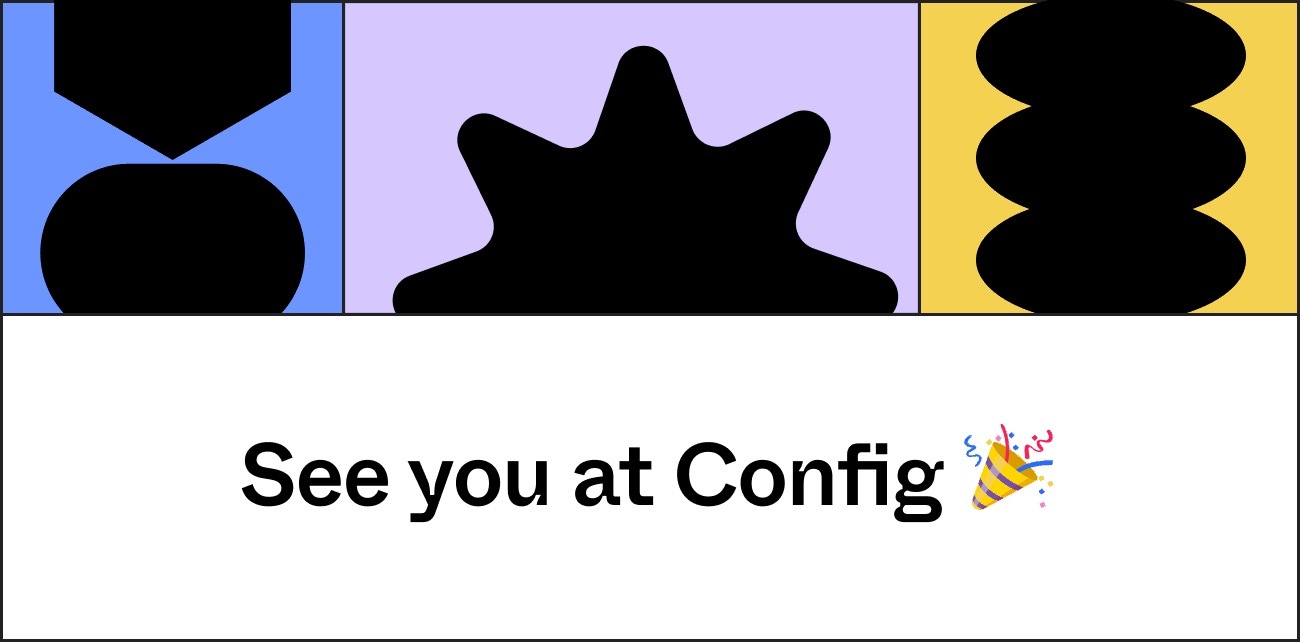 So I decided to travel the 4,970 miles (8,000km) from Tokyo to San Francisco to listen to people talk about software, hopefully meet some interesting designers and get my hands on some of that sweet sweet Figma swag. Fun fact: a lot of people at Figma actually ended up joining after attending Config.
So I decided to travel the 4,970 miles (8,000km) from Tokyo to San Francisco to listen to people talk about software, hopefully meet some interesting designers and get my hands on some of that sweet sweet Figma swag. Fun fact: a lot of people at Figma actually ended up joining after attending Config.
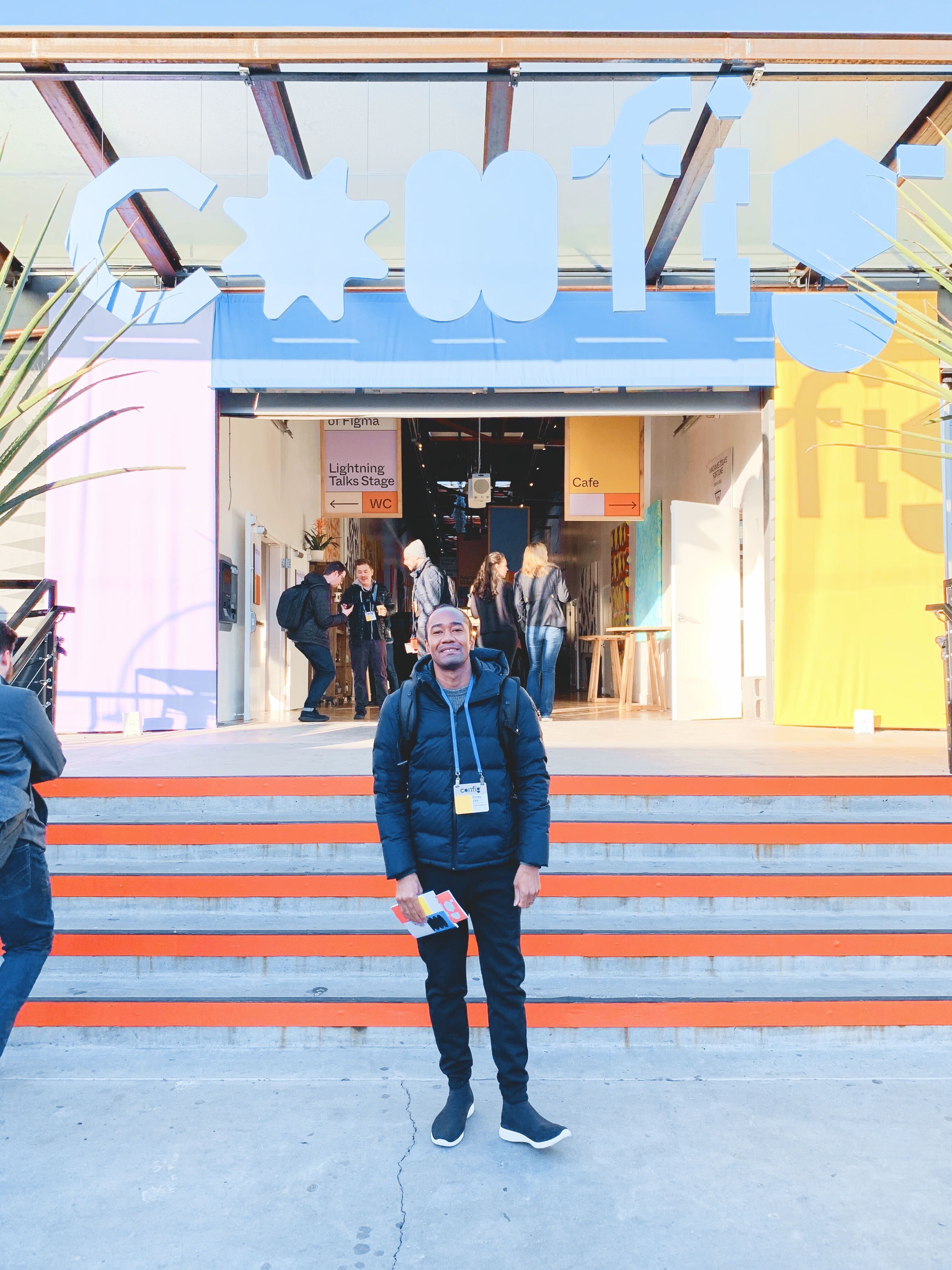 Coming down from the high of attending Config I returned to Tokyo just as the pandemic starts. I guess there won't be another Config anytime soon...
Coming down from the high of attending Config I returned to Tokyo just as the pandemic starts. I guess there won't be another Config anytime soon...
2022: Joining Figma
Enter February 2022 and I get a DM from the one and only Tom at Myspace Figma. He tells me that Figma is localizing their product into Japanese, hiring a team in Tokyo, and they're hiring for a position called a Designer Advocate. I'd never heard of a Designer Advocate but after reading the role description I realized all the things I had been doing up until that point all related to the role: advocating for design, enabling designers, creating content, and building community.
I already was a designer advocate:
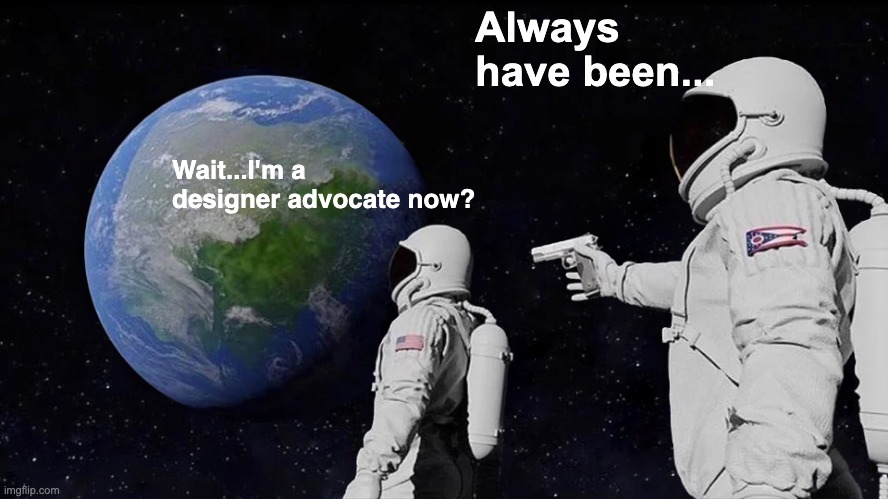
So I expressed my interest in the role and that kicked off the interview process. Having spent the last few years self-employed I was worried about my interview skills didn't know what to expect. On top of that up until this point I had spent my entire design career in Japan so I had no idea what working at in a global team would be like.
So after a many rounds of interviews over a few months I get to a point where I'm almost indifferent to the outcome. I just want to get to an outcome. It was probably the most interviews I've ever done for a role in my career. The interviews weren't particularly intense and everyone I met was great, but..it was a lot. And then I finally got to the end and received an offer!
Even though I had spent years using Figma, participating in the community and meeting many people from the team on top of the whole interview process; taking the offer was actually a hard decision. Could I even go back to working in a team? Could I actually perform at the level required?
What would I gain in return for sacrificing my flexibility? I had a lot of doubts about whether it was the right move or not.
I end I decided it would be a waste to not take the opportunity. There were so many potential things I could do with a great team that I probably couldn't do on my own.
So, I accepted the offer and in June of 2022 I officially joined Figma as the first designer advocate in Japan/APAC.
Writing this a year and a half later I can confidently say that this has been the best decision I've made in my career to date.
I've been lucky to have to opportunity to work on some great projects, while doing my best work, and working with the best team.
And that's the story of how it took five years to get a job at Figma.
 Modest glow up from Config 2020 attendee to Config 2023 host
Modest glow up from Config 2020 attendee to Config 2023 host